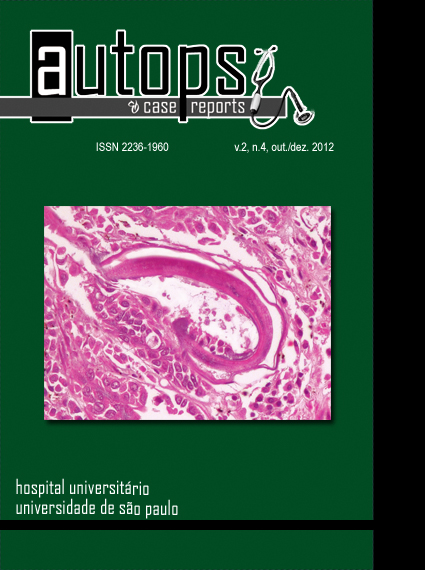Aortic aneurysm and diverticulum of Kommerell: a dreadful concomitance
Keywords:
Aorta, Aneurysm, Dissection, Aberrant subclavian artery, Chest pain, Atherosclerosis.Abstract
First described in 1936, the diverticulum of Kommerell (DOK) is a dilatation of the proximal segment of an aberrant subclavian artery. Appearing more frequently in the left-sided aortic arch, the aberrant right subclavian artery passes behind the esophagus toward the right arm, causing symptoms in the minority of cases. Diagnosis is generally incidental with this pattern. When symptomatic, dysphagia, respiratory symptoms, hoarseness, chest pain, and upper limb ischemia are the most common complaints. Although debatable, the origin of DOK is accepted as being degenerative or congenital. The degenerative condition is normally associated with atherosclerosis and occurs more frequently after the age of 50 years with no gender predominance. Complications may be life threatening and are more commonly related to the diverticulum aneurysm or when associated with aortic diseases such as aneurysms or dissection. The authors present a case of a 67-year-old male with a history of acute chest pain, neurological disturbances, and hypertensive crisis. The diagnostic workup revealed an aortic arch aneurysm with intramural hematoma and a diverticulum aneurysm of Kommerell. Treatment was conservative at first. The patient presented a satisfactory outcome and was referred to an outpatient clinic for follow up and further therapeutic consolidation.Downloads
Download data is not yet available.
Downloads
Issue
Section
Article / Clinical Case Report
License
Copyright
Authors of articles published by Autopsy and Case Report retain the copyright of their work without restrictions, licensing it under the Creative Commons Attribution License - CC-BY, which allows articles to be re-used and re-distributed without restriction, as long as the original work is correctly cited.
How to Cite
Campos, F. P. F. de, Silva, E. S. da, Martines, B. M. R., & Martines, J. A. dos S. (2012). Aortic aneurysm and diverticulum of Kommerell: a dreadful concomitance. Autopsy and Case Reports, 2(4). https://revistas.usp.br/autopsy/article/view/48324



